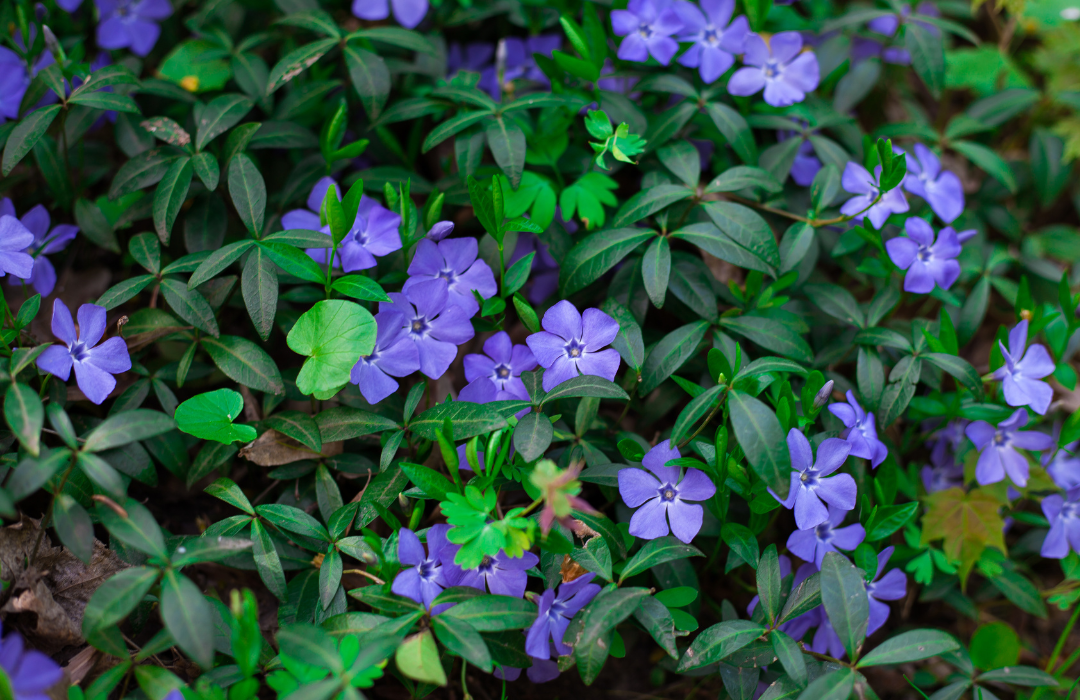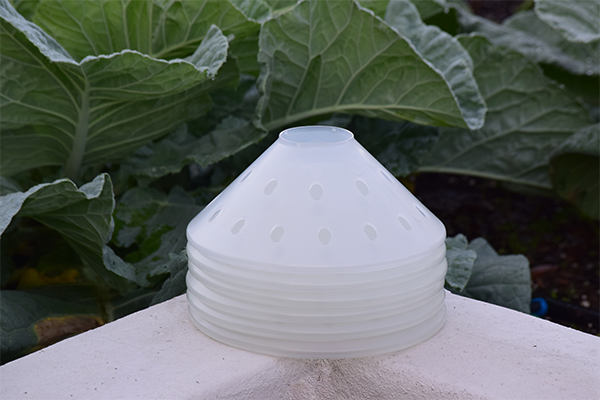What are the disadvantages of ground cover?
Table of Content
-
Introduction
-
Understanding Ground Cover
-
Definition of Ground Cover
-
General Disadvantages of Ground Cover
-
Invasiveness
-
Maintenance Challenges
-
Allergies and Health Risks
-
-
Specific Disadvantages by Ground Cover Type
-
Disadvantages of Ivy
-
Disadvantages of Vinca
-
Disadvantages of Moss
-
Disadvantages of Clover
-
-
Environmental Impact of Ground Cover
-
Impact on Local Ecosystem
-
Soil Health Considerations
-
-
Aesthetic Limitations
-
Visual Monotony
-
Difficulty in Combining with Other Plants
-
-
Pest and Disease Concerns
-
Attracting Unwanted Pests
-
Susceptibility to Diseases
-
-
Cost Implications
-
Initial Installation Costs
-
Long-term Maintenance Costs
-
-
Key Takeaways
-
Conclusion
-
Ivy: Known for its rapid growth and ability to climb surfaces, ivy can be both a blessing and a curse.
-
Vinca: Also known as periwinkle, this plant is popular for its beautiful blue flowers but can be quite invasive.
-
Moss: Ideal for shady areas, moss can create a serene, green carpet but may require specific conditions to thrive.
-
Clover: Often used for its nitrogen-fixing properties, clover can be advantageous but may also attract certain pests.
-
Invasiveness: Many ground cover plants, such as ivy and vinca, are known for their rapid and often uncontrollable spread. This invasiveness can disrupt local ecosystems and require significant management efforts. For more information, the National Park Service provides insights into the impact of invasive plants.
-
Maintenance Challenges: While ground covers can reduce mowing needs, they often come with their own set of maintenance requirements. Keeping these plants in check can be labor-intensive. The Cornell University Gardening Resources offer valuable guidelines on plant care.
-
Health Risks: Certain ground cover plants can pose health risks, from allergies to pest-related diseases. The Centers for Disease Control and Prevention (CDC) provide essential information on plant-related health concerns.
-
Environmental Impact: Ground cover plants can affect local ecosystems and soil health. Some may enhance soil stability, while others might deplete nutrients or alter soil structure. For more insights, visit the USDA Natural Resources Conservation Service.
-
Aesthetic Limitations: Ground covers can lead to visual monotony and may be challenging to combine with other plants. For tips on creating diverse landscapes, refer to the Purdue University Extension.
-
Pest and Disease Concerns: These plants can attract unwanted pests and be susceptible to diseases. For managing these issues, the U.S. Environmental Protection Agency (EPA) offers guidelines on safe pest control practices.
-
Cost Implications: Both initial installation and long-term maintenance costs can be significant. For a detailed breakdown of landscaping costs, visit the National Association of Landscape Professionals.
Common Types of Ground Cover
Introduction
Ground cover plants can be a beautiful and practical addition to any landscape. They provide benefits such as soil stabilization, weed suppression, and aesthetic appeal. However, like any gardening choice, ground cover comes with its own set of challenges and disadvantages.
We want to shed light on these drawbacks, helping you make a more informed decision about whether ground cover is suitable for your landscape needs. From their invasive tendencies to maintenance difficulties, health risks, and environmental impacts, we will cover all the bases.
Before diving deeper, it’s crucial to understand what ground cover plants are and the most common types. This foundational knowledge will set the stage for comprehending the specific disadvantages discussed later on.
Understanding Ground Cover
Ground cover plants are low-growing, spreading plants that form a dense, even carpet over the soil. They are often used to enhance the visual appeal of a garden, prevent soil erosion, and suppress weeds.
Definition of Ground Cover
Ground cover plants are typically characterized by their ability to spread quickly and cover large areas. They can be herbaceous perennials, shrubs, or even succulents. The primary purpose of these plants is to cover the ground, providing a green, lush look while offering functional benefits such as reducing soil erosion and minimizing weed growth.
Common Types of Ground Cover

There are several types of ground cover plants, each with its unique characteristics and potential drawbacks. Here are a few commonly used ones:
For more detailed information on these and other types of ground cover, you can refer to reputable sources like Britannica and USDA Forest Service.
General Disadvantages of Ground Cover
Ground cover plants, while advantageous in many ways, are not without their drawbacks. Knowing these disadvantages can help you make a more informed decision about incorporating them into your landscape. Let's explore some of the general challenges associated with ground cover.
Invasiveness
Many ground cover plants are known for their invasive tendencies. Plants like ivy and vinca can spread rapidly, often outcompeting native species and disrupting local ecosystems. The invasive nature of these plants can lead to significant management challenges. For more information on invasive plant species and their impact, you can visit the USDA Forest Service.
Maintenance Challenges
While ground cover plants can reduce the need for mowing, they often come with their own set of maintenance requirements. For instance, keeping ivy or vinca from overtaking other plants and structures can be labor-intensive. Moreover, certain ground cover types may require specific soil conditions, regular pruning, or pest control measures. For detailed guidelines on plant maintenance, the Cornell University Gardening Resources offer a wealth of information.
Allergies and Health Risks
Some ground cover plants can pose health risks, especially for individuals with allergies. For example, plants like ivy can produce pollen that might trigger allergic reactions. Additionally, certain ground covers can harbor pests such as ticks, increasing the risk of diseases like Lyme disease. The Centers for Disease Control and Prevention (CDC) provides essential information on plant-related health risks.
Understanding these general disadvantages is crucial as you consider whether ground cover is the right choice for your landscape.
Specific Disadvantages by Ground Cover Type
While ground cover plants can add an appealing touch to your landscape, each type comes with its unique set of challenges. It's essential to be informed about these specific disadvantages to make the best choice for your garden.
Disadvantages of Ivy
Ivy, with its vigorous growth and ability to cover surfaces quickly, can become a double-edged sword. On one hand, it can create a lush, green blanket over walls and ground. On the other hand, its invasive nature can lead to significant issues. Ivy can smother other plants, damage structures, and require extensive management to keep it in check. For more information on managing invasive species like ivy, the National Invasive Species Information Center offers valuable resources.
Disadvantages of Vinca
Vinca, or periwinkle, is cherished for its attractive blue flowers and ability to thrive in shady areas. However, its rapid spreading nature often makes it invasive, outcompeting native plants and disrupting local ecosystems. Maintaining vinca can be challenging as it requires regular monitoring and control to prevent it from overtaking other garden elements. Detailed information on managing invasive plants like vinca can be found on the National Park Service website.
Disadvantages of Moss
Moss can transform shady areas into tranquil, green carpets, but it comes with its own set of requirements. Moss thrives in specific conditions, such as high humidity and acidic soil. It can be challenging to maintain these conditions consistently. Moreover, moss may not be suitable for areas with foot traffic, as it can be easily damaged. The USDA Forest Service provides insights into the growth and care of moss.
Disadvantages of Clover
Clover is often used for its nitrogen-fixing properties, which can enrich the soil. However, it has its downsides too. Clover can attract pests like bees and certain insects, which might be problematic for those who are allergic. Additionally, clover may not blend well with other landscape plants, creating a less cohesive look. For more information on managing clover and other ground covers, refer to the Agriculture Victoria website.
Understanding these specific disadvantages helps you make an informed decision about which ground cover plants may be suitable for your landscape.
Environmental Impact of Ground Cover
Ground cover plants can have significant environmental implications, both positive and negative. While they may provide benefits such as reducing soil erosion and enhancing aesthetic appeal, certain ground covers can also negatively impact local ecosystems and soil health.
Impact on Local Ecosystem
Ground cover plants, especially invasive species, can disrupt local ecosystems by outcompeting native flora. This competition can lead to a reduction in biodiversity, affecting not only plant life but also the wildlife that depends on these native plants for food and habitat. For instance, ivy and vinca are known for their aggressive spread, often overshadowing native plants and altering the natural balance. For more insights on how invasive plants affect local ecosystems, you can visit the National Park Service.
Soil Health Considerations
While some ground cover plants can enhance soil health by preventing erosion and fixing nitrogen, others can deplete soil nutrients and alter its structure. For example, certain ground covers may lead to soil compaction, reducing its ability to absorb water and support other plant life. Additionally, ground covers like moss may require acidic soil, which might not be suitable for other plants in your garden. The USDA Natural Resources Conservation Service provides comprehensive information on maintaining soil health and the impact of various plants.
Understanding these environmental impacts is crucial for making informed decisions about incorporating ground cover plants into your landscape.
Aesthetic Limitations
While ground cover plants can offer a lush, green look to your garden, they also come with certain aesthetic limitations that may detract from your landscape’s overall appeal. Understanding these limitations can help you better plan and design your garden space.
Visual Monotony
One of the primary aesthetic limitations of ground cover plants is the potential for visual monotony. Having a single type of ground cover across a large area can create a uniform, but sometimes dull, appearance. This lack of diversity can make your garden less visually stimulating and interesting. For tips on creating a more visually diverse landscape, the Purdue University Extension offers valuable guidance on landscape design.
Difficulty in Combining with Other Plants
Integrating ground cover plants with other types of plants can also be challenging. Ground covers can sometimes outcompete or overshadow other plants, making it difficult to achieve a harmonious blend of different plant species. This can limit your ability to create varied and layered garden designs. The Clemson University Cooperative Extension provides insights into selecting and combining plants effectively in your landscape.
Recognizing these aesthetic limitations is crucial for making informed decisions about incorporating ground cover plants into your garden.
Pest and Disease Concerns
Ground cover plants, while offering numerous benefits, can also attract unwanted pests and be susceptible to various diseases. These issues can compromise the health of your garden and increase maintenance efforts. Let's delve into some of the primary pest and disease concerns associated with ground cover plants.
Attracting Unwanted Pests
Ground cover plants can create a hospitable environment for pests. Dense foliage provides shelter and breeding grounds for insects and small animals. For example, ivy and other thick ground covers can harbor pests such as slugs, snails, and even rodents. These pests can damage your plants and potentially spread to other areas of your garden. For more information on managing garden pests, the U.S. Environmental Protection Agency (EPA) offers valuable guidelines on safe pest control practices.
Susceptibility to Diseases
Ground cover plants can also be prone to various diseases. Fungal infections, root rot, and leaf spots are common issues that affect many ground cover species. For instance, vinca is particularly susceptible to fungal diseases, which can spread rapidly in moist conditions. Proper spacing, adequate air circulation, and regular monitoring are essential to mitigate these risks. The Clemson University Cooperative Extension provides comprehensive information on plant diseases and their management.
Understanding these pest and disease concerns is crucial for maintaining a healthy and thriving garden. Being proactive in monitoring and managing these issues can help you enjoy the benefits of ground cover plants while minimizing their drawbacks.
Cost Implications
While ground cover plants can provide numerous benefits, it's essential to consider the cost implications associated with their use. Both initial installation and long-term maintenance costs can add up, impacting your overall landscaping budget.
Initial Installation Costs
Setting up ground cover plants can involve significant initial expenses. The cost of purchasing the plants, soil amendments, and other materials can vary widely depending on the type of ground cover you choose. Additionally, if you opt for professional installation, labor costs can further increase your initial investment. For a detailed breakdown of landscaping costs, the National Association of Landscape Professionals provides valuable resources and cost estimates.
Long-term Maintenance Costs
Maintaining ground cover plants requires ongoing attention and resources. Regular pruning, pest control, and disease management are essential to keep the plants healthy and prevent them from overtaking other garden areas. These maintenance tasks can be time-consuming and may necessitate additional expenses for gardening tools, fertilizers, and pest control products. For comprehensive guidelines on maintaining a healthy garden, the University of Minnesota Extension offers expert advice on lawn and garden care.
Understanding these cost implications is crucial for making informed decisions about incorporating ground cover plants into your landscape. By weighing the initial and long-term financial aspects, you can better plan your garden and ensure it aligns with your budget.
Key Takeaways
The journey through the world of ground cover plants has been enlightening, revealing both their beauty and their challenges. As with any landscaping choice, it's essential to weigh the pros and cons to make an informed decision. Here are the key takeaways from our discussion:
These key takeaways provide a comprehensive view of the disadvantages associated with ground cover plants. By understanding these potential drawbacks, you can make a more informed decision about whether ground cover is the right choice for your landscaping needs.
Conclusion
As we've navigated through the lush, yet sometimes challenging world of ground cover plants, it's evident that they come with a mixture of benefits and drawbacks. Their ability to transform a landscape with a verdant carpet of greenery is undeniable, offering practical advantages like soil stabilization and weed suppression. However, the darker side of ground cover includes their invasive tendencies, maintenance difficulties, potential health risks, and environmental impacts.
Ground cover plants can be a double-edged sword. While they can create a picturesque, low-maintenance garden, they also demand careful consideration and management to prevent them from becoming a horticultural headache. From the invasive nature of ivy and vinca to the specific growing conditions required by moss and the pest-attracting properties of clover, each type of ground cover has its unique set of challenges.
Whether you're a seasoned gardener or a green-thumbed novice, understanding these disadvantages will help you make more informed decisions. It's crucial to balance the aesthetic and practical benefits against the potential environmental and health impacts, maintenance efforts, and financial costs. For further reading and resources, you may refer to authoritative sources like the Environmental Protection Agency and the U.S. Department of Agriculture.
In conclusion, while ground cover plants can be a valuable addition to your landscape, they require thoughtful planning and diligent care. By weighing the pros and cons, you can make better choices that align with your gardening goals and environmental values.











